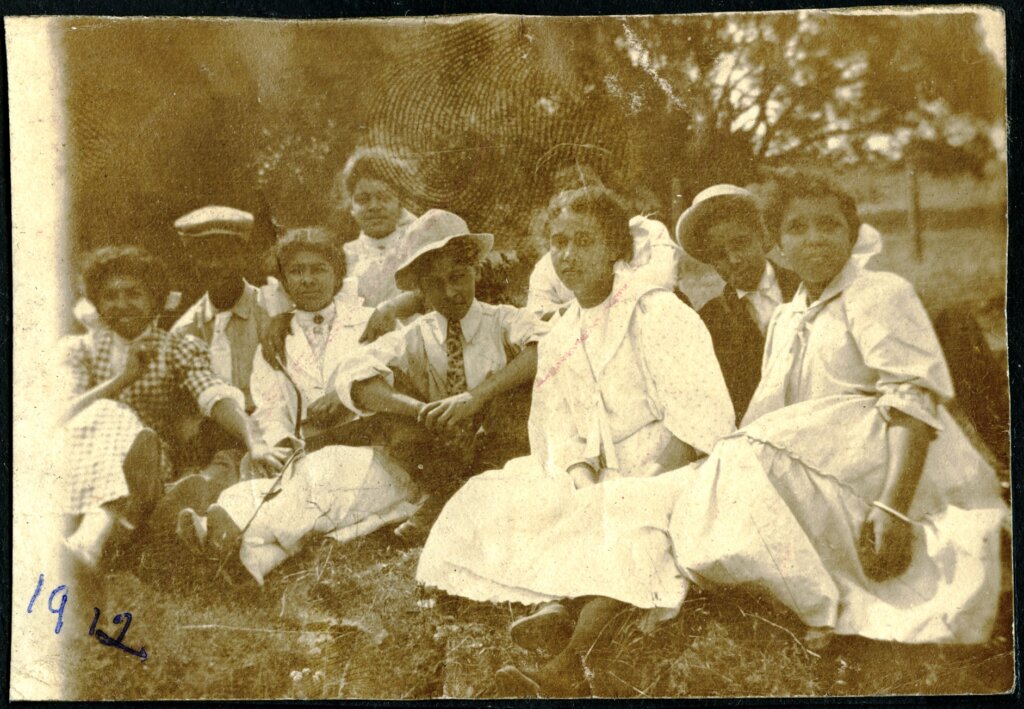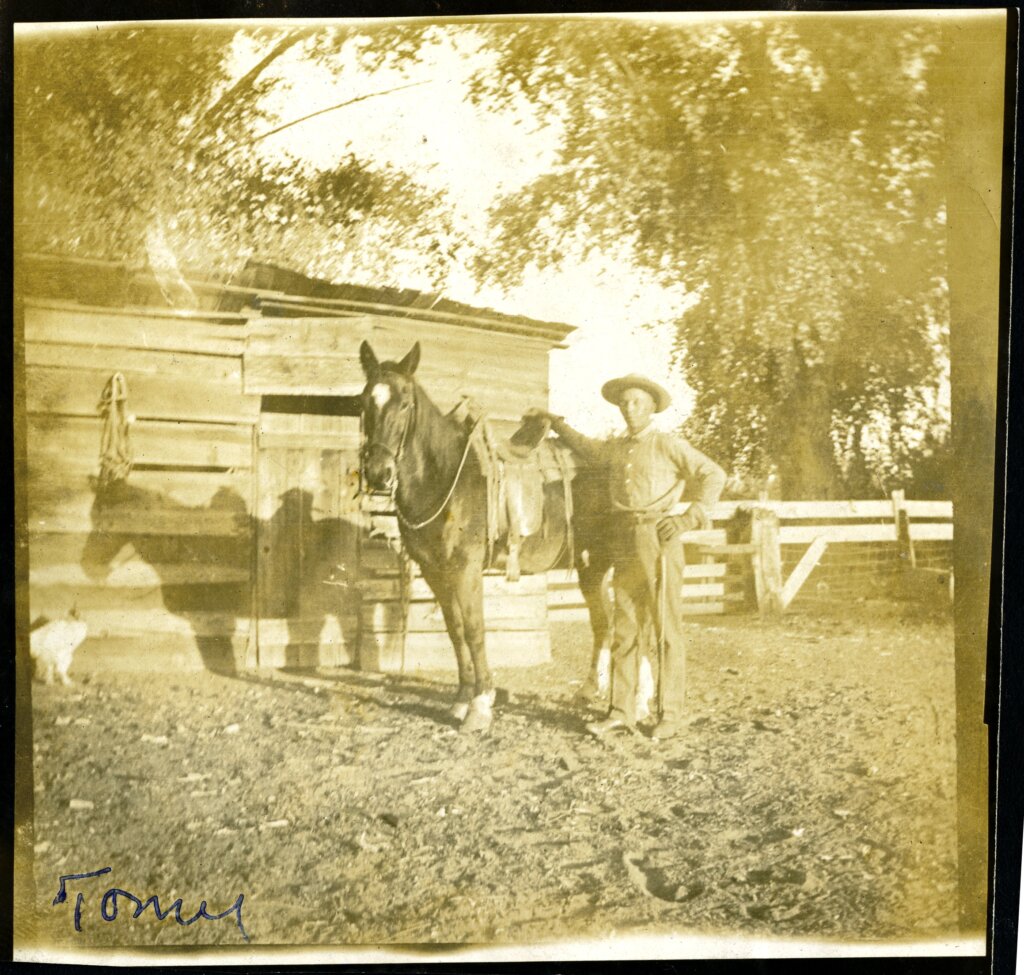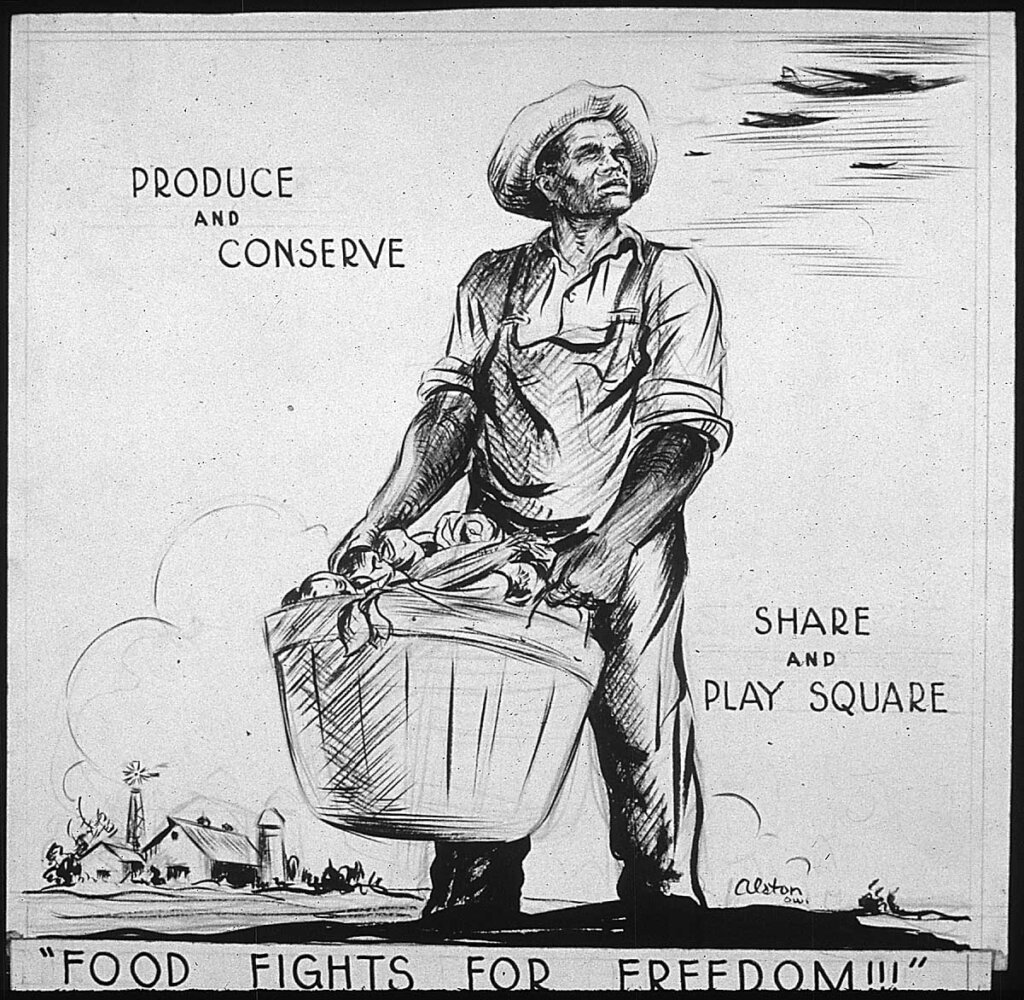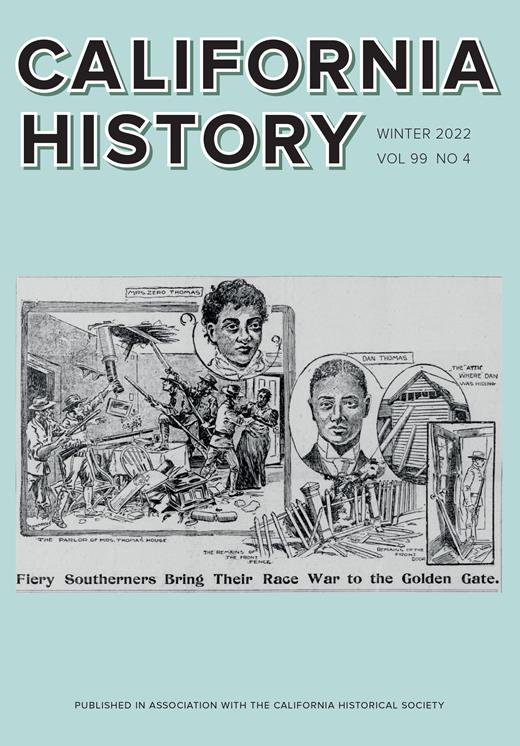
California History recently published its second special issue on the history of African Americans in California. This issue arrived in a moment of profound reckoning on racial injustice broadly, from police violence to institutionalized poverty to the free-form bigotry that is still alive and well in America. The articles in this issue highlight the agency and resistance of Black communities against their oppression, and tell stories of achieved victories, even if only partial ones. In “When Do You Stop Arriving?” Caroline Collins reports on a public history project that examines the hidden histories of the African Americans who shaped California’s food and farming culture from early statehood to the present. We asked Collins to tell us more about her research and the multimedia exhibit.
Can you describe the “We Are Not Strangers Here” project and the topic it addresses?
“We Are Not Strangers Here: African American Histories in Rural California” addresses a long-standing inaccuracy that Black people don’t belong in the natural world or in agricultural and rural communities in California. So our team put together a multimedia project based around a traveling banner exhibit that would display vibrant images of Black folks in rural California. The banners also include written historical contextualization and a cellphone audio-tour featuring the voices of scholars and descendants of rural Black Californians. We additionally produced a six-episode podcast series to accompany the banner exhibition.

Roberts Family Papers, African American Museum &
Library at Oakland.
How did the project come about? Can you tell us more about its inception?
This collaborative project began as a set of conversations between Susan Anderson (who was at the California Historical Society at the time and is now History Curator and Project Manager at the California African American Museum) and Ildi Carlisle-Cummins (Executive Director of the California Institute for Rural Studies, umbrella organization for the Cal Ag Roots podcast). Ildi was interested in working with Susan on a Cal Ag Roots podcast project which would highlight hidden histories of African Americans who have shaped California’s food and farming culture from early statehood to the present. Given Susan’s background and expertise in public exhibition, Susan helped frame the project conceptually as a traveling exhibit; served as the project’s Primary History Advisor; and wrote banner text. I joined the collaboration to do archival research for the exhibit banners and podcast; conduct interviews with scholars and culture bearers; and write/produce the project’s accompanying podcast series. We also collaborated with Exhibit Envoy and its executive director, Amy Cohen, to fabricate and tour the project’s banner exhibit. The project was made possible with support from California Humanities and the 11th Hour Project at the Schmidt Family Foundation.
What broader themes does the project examine?
The project covers three major themes. The first, “Farmers and Ranchers: Here from the Start,” chronicles how, from statehood, Black farmers and ranchers settled in and contributed to rural communities across U.S. California, growing crops, raising livestock, and running successful farms and businesses. The second theme, “Independent Settlements,” explores how some Black settlers established roots in rural California by forming communities with one another. Specifically, this section chronicles how, as early as the nineteenth century, Black communities—large and small, loosely organized and formal—took shape across rural California. And the third and final theme, “Into the Modern Age,” highlights the ways in which African Americans continue to farm in rural communities across California, working to carry out the legacy of generations of Black agriculturalists who worked the land before the United States existed. This final section also gestures to how this legacy continues in urban gardens.
How did you find all the archival images for the exhibit? Was it hard to uncover these materials?

1942-1945. Courtesy National Archives, photo no.
535638.
As the project’s exhibition researcher, I spent time physically and digitally consulting various archives across the state. We were very fortunate to have Susan Anderson as our Primary History advisor as she provided me with the initial roadmap. Conversations with archivists, collections managers, and descendants of Black homesteaders also led to further discoveries. It was an intensive process, but what was truly most challenging was narrowing down our finds for the exhibit. Because, as Susan notes in the project podcast, though Black folks are often missing from accounts of early state history, if you examine archival documentation of the time—newspapers, court documents, and other primary sources—Black people are there. It is an important discrepancy that highlights a common misconception regarding the dearth of African American stories within public accounts of early California histories: these stories are not hidden: the histories of early African American settlers were hidden because they were suppressed. “We Are Not Strangers Here” helps restitch these hidden stories into the cultural narratives that define iconic parts of early California history.
Where can people see the exhibit and how can they access the podcast episodes?
After an initial COVID-19 delay, the exhibit began traveling across the state in spring 2021. Past stops include Sutter County Museum in Yuba City; Colonel Allensworth State Historic Park in Earlimart; the San Luis Obispo Coast District of California State Parks; the Tulare County Museum in Visalia; the Society of California Pioneers in San Francisco; the Central Branch of the San Diego Public Library; and the Milpitas Library. It is on exhibit at the San Joaquin Historical Museum in Lodi until April 2, 2023; travels next to the Healdsburg Museum, then the Shasta Historical Society in Redding. People can learn more about the tour or book tickets by visiting the project’s Exhibit Envoy page. Folks can also access the project’s podcast series at www.agroots.com, Apple Podcasts, or anywhere else they get podcasts.

2, 1960. African American Museum & Library at
Oakland Photograph Collection.
What are your future plans for the project?
We have some exciting future plans for “We Are Not Strangers Here”! I am in the process of codesigning a digital StoryMap version of the exhibit with California Institute for Rural Studies research and storytelling associate Li Schmidt. This version will allow folks who are not able to visit the banner exhibit to engage with its content; it will include additional archival materials and newly produced media and interactive features. We are also pleased to announce that Susan Anderson is curating a gallery version of the traveling exhibit. This exhibition will include Black communities and highlighted areas that are not in the banner exhibit and will feature objects from two archeological digs of African American homestead sites: Alice Ballard’s house in the Santa Monica Mountains and the Lanfair homestead in the Mojave Desert. It will run at the California African American Museum from August 5, 2023 – January 1, 2024.

We invite you to read California History’s special issue, “New Histories of Black California,” including Collins’s article, “When Do You Stop Arriving? The Project ‘We Are Not Strangers Here: African American Histories in Rural California,’” for free for a limited time.
